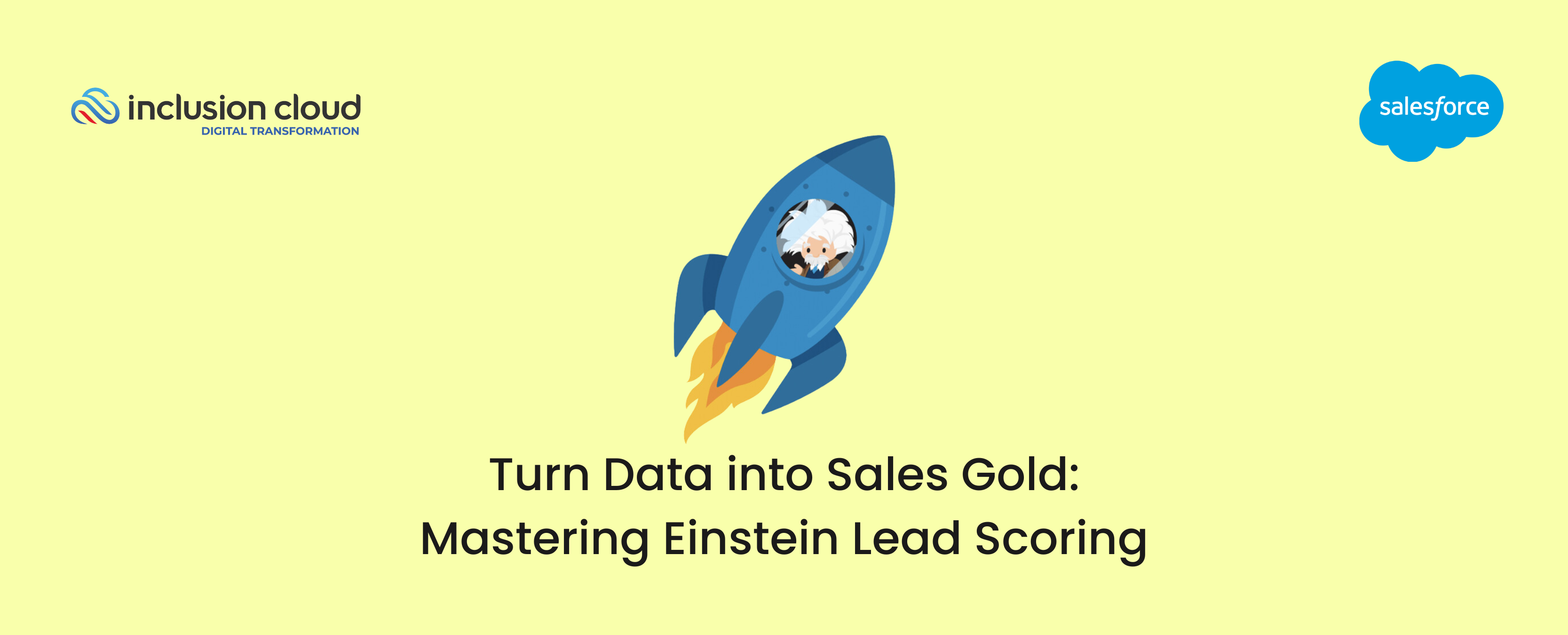Businesses nowadays are bombarded with a constant influx of leads. Marketo reports that B2B organizations see an average of 67% more leads per year compared to just five years ago. This surge in lead volume, however, presents a significant challenge: identifying the most promising leads amidst the data deluge.
Traditional methods of lead qualification, often relying on manual review of forms and website behavior, are becoming increasingly inefficient and time-consuming. This is further strained by the growing complexity of buyer journeys, which can involve multiple touchpoints and interactions across different channels.
As a result, businesses face several hurdles: overlooking high-value leads or wasting time on unqualified leads due to manually sifting through large volumes of data, ineffective prioritization by sales teams lacking necessary insights to focus on leads with the highest conversion potential, and limited data-driven decision making leading to challenges in optimizing marketing and sales strategies for long-term success.
In this context, Einstein Lead Scoring emerges as a powerful solution. It leverages AI to automate lead qualification and transform data into actionable insights, ultimately helping businesses navigate the lead avalanche and find the hidden gems.
Understanding Einstein Lead Scoring
What data points does Einstein consider? While demographic information like company size and industry can be helpful starting points, Einstein Lead Scoring goes far beyond the basics. It leverages a comprehensive range of data sources to create a more nuanced and accurate picture of each lead’s potential.
Explicit data includes information that leads explicitly provide, such as their job title, company website visits, and form submissions.
Implicit data involves analyzing implicit data points, like time spent on specific website pages, content downloads, and email engagement. This behavioral data provides valuable insights into a lead’s interests and level of engagement.
External data sources can also be integrated, like social media platforms and marketing automation tools, providing a holistic view of the lead’s online activity.
By combining these diverse data points, Einstein builds a sophisticated scoring model that considers not just basic demographics, but also lead behavior, interests, and engagement levels. This multi-dimensional approach allows for a more precise and individualized assessment of each lead’s conversion potential. Some specific examples of data points that Einstein may consider include website behavior, email engagement, social media activity, and marketing campaign engagement. The specific data points used by Einstein will vary depending on your business and industry. However, the core principle remains the same: by leveraging a rich tapestry of data, Einstein helps you uncover hidden insights and identify the leads most likely to convert into valuable customers.
Step-by-Step Guide to Implementing Einstein Lead Scoring
Unleashing the power of Einstein Lead Scoring requires a strategic approach. Here’s a step-by-step guide to help you get started:
Building Your Ideal Customer Profile (ICP)
Before diving into data, it’s crucial to define your ideal customer profile (ICP). This serves as the foundation for your lead scoring model, guiding you in identifying the characteristics and behaviors of your most valuable leads.
Consider these aspects when building your ICP:
- Demographics: Company size, industry, location, etc.
- Firmographics: Company revenue, number of employees, etc.
- Behavioral traits: Website behavior, content preferences, engagement with marketing campaigns, etc.
- Needs and challenges: What challenges does your ideal customer face? How can your product or service address them?
By outlining your ICP, you establish a clear benchmark for evaluating lead potential and assigning relevant weights to different data points in the scoring process.
Data Onboarding and Cleaning
Einstein Lead Scoring thrives on clean and accurate data. This step involves:
- Identifying data sources: Salesforce CRM, marketing automation platforms, website analytics tools, etc.
- Extracting and integrating data: Ensure the data is properly formatted and integrated into your Salesforce instance.
- Data cleaning and deduplication: Eliminate duplicate entries, address inconsistencies, and correct any errors to ensure data quality.
Clean and organized data is essential for training the Einstein model and generating reliable lead scores.
Setting the Score
With your ICP and clean data in place, it’s time to define the lead behaviors that will contribute to the lead score. This involves:
- Identifying key behaviors: These behaviors should align with your ICP and reflect the characteristics of high-value leads. Examples include downloading white papers, attending webinars, or visiting specific product pages.
- Assigning weights: Determine the relative importance of each behavior by assigning weights. Behaviors that strongly correlate with conversion should receive higher weights.
By carefully selecting and weighting lead behaviors, you create a scoring system that accurately reflects the potential value of each lead.
Putting it All Together
With the foundation laid, it’s time to construct your lead-scoring model using the power of Einstein. Here’s how:
- Accessing Einstein Lead Scoring: Head over to the Setup menu in Salesforce and enable Einstein Lead Scoring. This unlocks the feature and allows you to leverage its capabilities.
- Selecting Data Points: Remember your defined ICP and the lead behaviors you identified? Now’s the time to choose the specific data points you want to include in your model. These data points should reflect the characteristics and actions indicative of high-value leads.
- Setting Scoring Rules: Here’s where you define the weighting system for your lead scoring model. Assign scores to different data points, with higher weights given to behaviors that strongly correlate with conversion. This ensures that leads exhibiting these behaviors receive a higher overall score, indicating their greater potential value.
Once you’ve completed these steps, Einstein will take center stage. It will analyze the data you’ve provided, considering the weights you assigned, and automatically generate a lead scoring model. This model serves as the engine that assigns a numerical score to each new lead based on their characteristics and behaviors.
Einstein at Work
Einstein Lead Scoring goes beyond simply assigning a number to each lead. It transforms this data into actionable insights, empowering businesses to optimize their outreach strategies and nurture leads more effectively. Here’s a glimpse into how Einstein works in practice:
H3: Prioritization Powerhouse
Sales teams are bombarded with leads, often struggling to identify the most promising prospects. Einstein Lead Scores act as a prioritization powerhouse, allowing sales reps to focus their efforts on the leads with the highest conversion potential.
Here’s how it works:
- Lead scores provide a clear ranking system. Sales reps can prioritize leads based on their scores, directing their time and resources toward the leads most likely to convert.
- Einstein Lead Insights within Salesforce can further highlight specific lead behaviors that contributed to a high score. This empowers sales reps to tailor their outreach strategies for each lead, increasing their chances of success.
For instance, a lead with a high score who has downloaded product brochures and attended a recent webinar might be a prime candidate for a personalized sales call, while a lead with a lower score might be better suited for nurturing emails or automated marketing campaigns.
Segmentation Savvy
Lead scoring isn’t just about individual leads; it also enables powerful lead segmentation. By segmenting leads based on their scores, businesses can create targeted marketing and outreach campaigns.
Imagine dividing your leads into categories like “high potential,” “medium potential,” and “nurture.” Each segment receives tailored communication based on their score and the likelihood of conversion.
- High-potential leads might receive personalized outreach from sales reps, while medium-potential leads could be nurtured with targeted email campaigns or retargeting ads.
- Leads with lower scores can still be nurtured with informative content and thought leadership pieces, keeping them engaged with your brand until they become more sales ready.
This data-driven segmentation ensures that businesses are allocating their resources effectively, delivering the right message to the right lead at the right time.
Leveraging Einstein for Deeper Lead Insights
Einstein Lead Scoring isn’t a one-trick pony. It unlocks a treasure trove of valuable data and insights that extend beyond the lead score itself. Einstein provides additional features, like predictive analytics, to give businesses an edge in lead nurturing:
- Predictive lead scoring: Einstein can analyze historical data to predict the likelihood of a lead converting
- within a specific timeframe. This allows sales teams to prioritize and nurture leads with a higher conversion probability.
- Lead nurturing recommendations: Based on lead behavior and engagement, Einstein can suggest specific nurturing activities for different lead segments, optimizing the nurturing process.
The Business Case for Einstein Lead Scoring
In today’s competitive environment, businesses need every advantage to turn leads into consumers. Einstein Lead Scoring presents a compelling proposition, offering a data-driven approach to lead nurturing that can significantly impact your bottom line. Here’s how:
Qualifying Leads That Convert
Gone are the days of chasing every lead. Einstein Lead Scoring empowers you to identify high-quality leads with demonstrably higher conversion potential. By focusing on leads with strong scores, businesses can expect to see a significant boost in their conversion rates.
Focusing Efforts on High-Value Leads
Sales teams are a precious resource. Einstein Lead Scoring eliminates the guesswork from lead qualification, allowing reps to prioritize their efforts on leads with the highest potential for success. This ensures that reps are spending their valuable time engaging with qualified leads most likely to convert, maximizing their impact.
Imagine a sales rep with a list of 100 leads. Lead scores can quickly highlight the top 20 leads most likely to convert. This allows the rep to focus their outreach on these high-value leads, while qualified leads with lower scores can be nurtured with marketing campaigns until they become sales-ready.
Gaining Insights from Every Lead
Einstein Lead Scoring goes beyond simple lead qualification. It unlocks a wealth of valuable data and insights that can inform your overall marketing and sales strategies. By analyzing lead behavior and engagement across different touchpoints, businesses can gain a deeper understanding of:
- Customer journeys: Identify the common paths high-value leads take before converting.
- Marketing campaign effectiveness: Measure the impact of different marketing campaigns on lead behavior and conversion rates.
- Content preferences: Understand the types of content that resonate most with high-value leads.
Conclusion
This AI-driven tool not only enhances lead quality and conversion rates but also optimizes sales efforts by pinpointing high-value prospects. The result? A significant shift from broad, generic outreach to targeted, strategic engagement.
The adoption of such technologies marks a pivotal moment in sales and marketing, where data-driven insights become the cornerstone of strategies. The benefits extend beyond efficiency; they redefine how businesses connect with potential customers, ensuring every interaction is informed and impactful.
As we embrace this transformative period, staying updated on the latest in AI and predictive analytics becomes essential.
For those looking to navigate the future of lead qualification and beyond, Inclusion Cloud is your go-to source for key insights and trends, make sure to follow us for more guides and insights.





